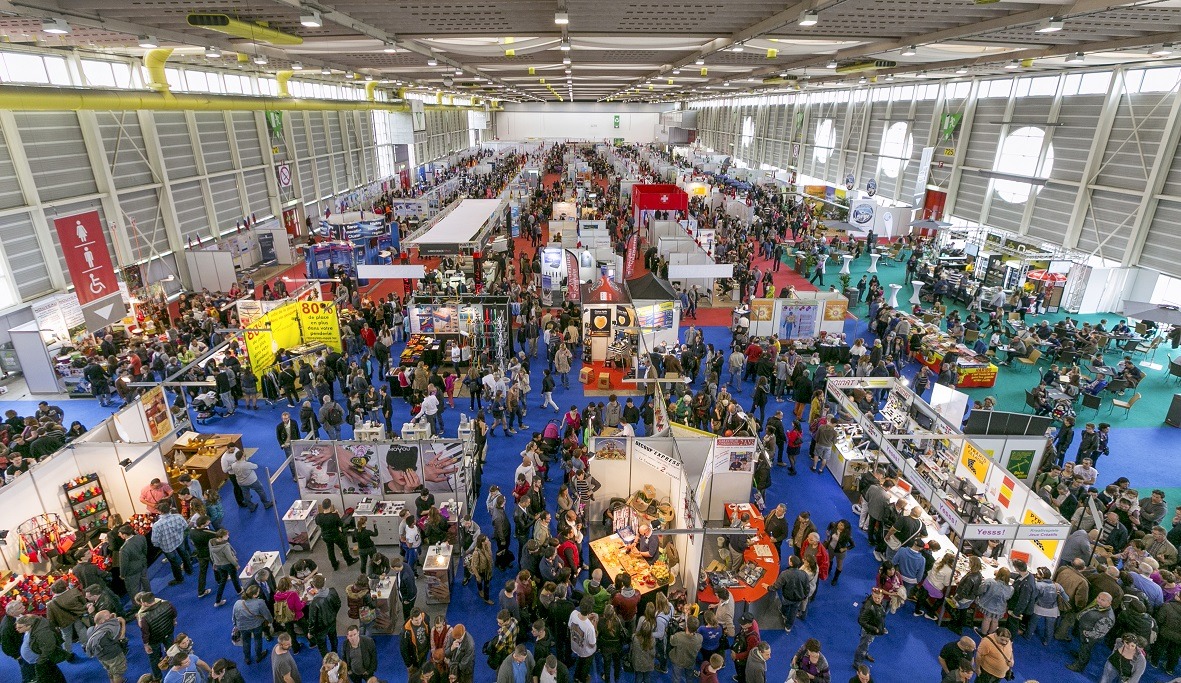
For five days in April, Geneva was the capital of invention. The 44th International Exhibition of Inventions of Geneva, the world's biggest meeting place for innovation, took place from April 13-17.

The world's unique annual exhibition, sponsored by the Swiss Federal Government and the World Intellectual Property Organization (WIPO), showcased over 1,000 new inventions and products, gathering 695 exhibitors from 40 countries. It is the world’s largest event of its type.
The event was organized into 3 different sectors this year: The first, hosted jointly by the Federal Institute of Intellectual Property and WIPO, had nine offices and institutes from eight countries. At this stand, visitors and exhibitors were able to learn about intellectual property protection methods.
The second sector was commercial, showing new and original products which could be bought directly at 38 stands. The last sector was the Exhibition of Inventions itself, which invited individual inventors to display their creations.
Without a doubt, the Exhibition of Inventions in Geneva is the most important event dedicated to innovation and to new products. Although the internet makes every idea and innovation accessible worldwide easily, this event has certain advantages over the internet. As indicated by Gerard Sermier, press officer for the exhibition, people can meet with inventors from across the world in one physical location, interact with inventions and speak directly with inventors. Over 55,000 people visited the exhibition this year.
People went to Palexpo not only to satisfy their curiosity, but also for business. The “official” estimate is that more than half of the visitors were there for business. “There are professionals and investors interested in buying patents, or industrialists researching new products,” said Sermier. Proof of this is that each year, more than 45% of the inventions exhibited are subject to licensing contracts. In 44 years, thousands of inventions have been marketed, and such success stories create the basis for the international reputation of the event.
For example, the winner of the Grand Prix in 2013 was a research team from Romania, with an invention to scan airplanes in order to discover smuggled goods, drugs or weapons. Three years later, they have started work on a factory to manufacture this invention in Saint-Imier, western Switzerland. This is an example of an invention which creates jobs and value.
This year, more than half of exhibitors are from the Middle East and Asia. This is mainly because of the enthusiasm of developing countries to present their studies and technological advancements, so travel costs for the inventors are often subsidized. Countries represented this year included China, Thailand, Iran, Romania, Poland, Korea, Russia, France, Croatia, Switzerland, Saudi Arabia, Egypt, Malaysia, Moldova, Spain, Bosnia, Qatar, and Sri Lanka.
Chinese inventors drew attention, since there was a relatively large number of them at the exhibition. European inventors seemed under-represented, presumably due to the lack of state subsidies to cover their costs. Swiss inventors made up 9% of the exhibition.
The majority of inventions were for the medical field and health care, protection of the environment and energy, mechanics and industrial processes, electronics and computer sciences, methods of transport, security, construction and civil engineering, agriculture and gardening, textiles and clothing, sanitation, sports and leisure, domestic science and practical novelties.
The Grand Prix of this year was awarded to Cheah Kok-Wai, a Hong Kong Baptist University professor, and co-founder of the Cathay Photonics company. His invention was developing a process for reinforcing the glass screens by applying a thin layer of sapphire - one of the hardest materials in the nature. Undoubtedly, the invention holds promise for smartphone producers and watchmakers.
Next year, the 45th edition of the exhibition will be taking place from the 5th to the 9th April 2017.